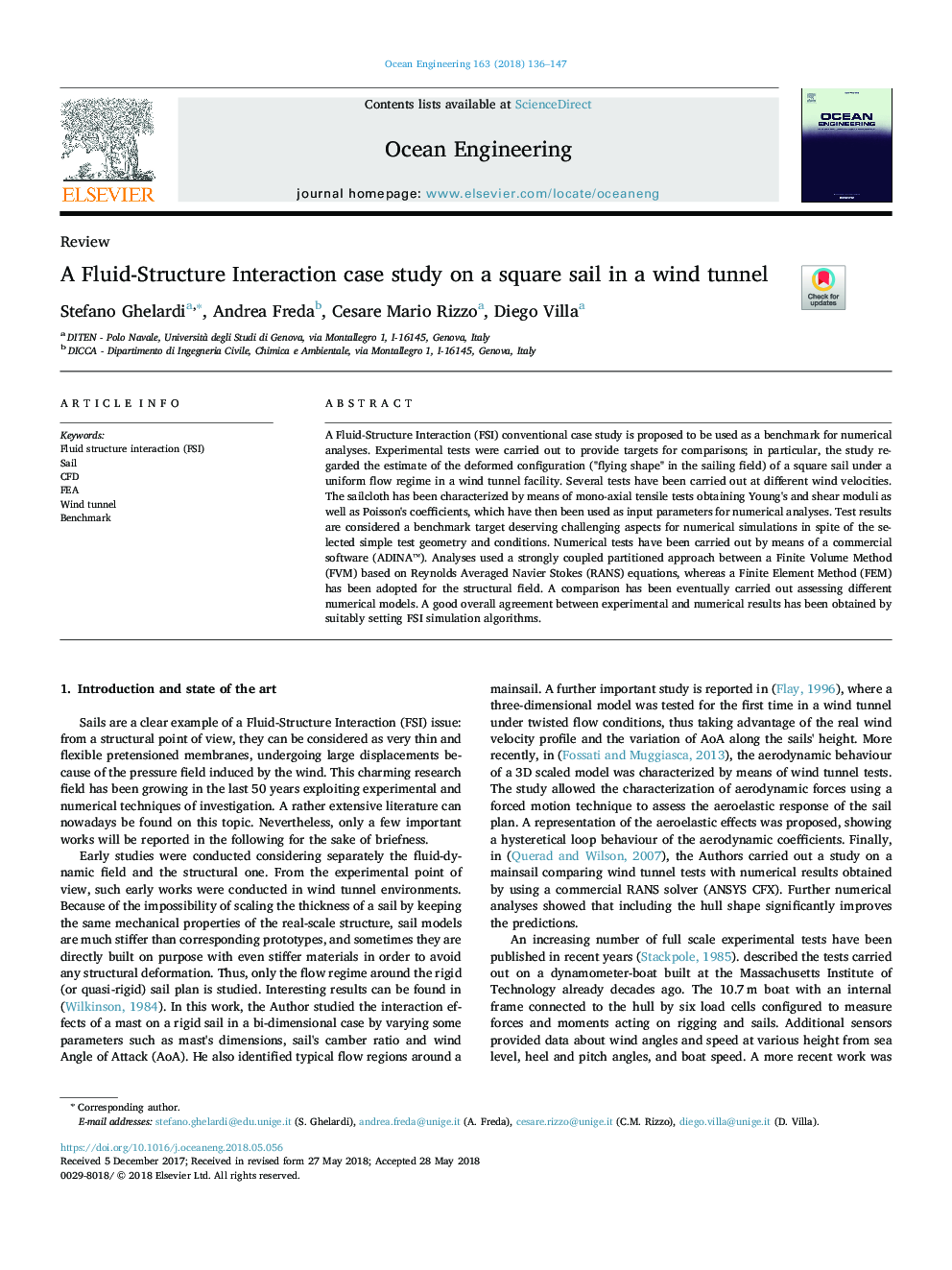| Article ID | Journal | Published Year | Pages | File Type |
|---|---|---|---|---|
| 8061870 | Ocean Engineering | 2018 | 12 Pages |
Abstract
A Fluid-Structure Interaction (FSI) conventional case study is proposed to be used as a benchmark for numerical analyses. Experimental tests were carried out to provide targets for comparisons; in particular, the study regarded the estimate of the deformed configuration ("flying shape" in the sailing field) of a square sail under a uniform flow regime in a wind tunnel facility. Several tests have been carried out at different wind velocities. The sailcloth has been characterized by means of mono-axial tensile tests obtaining Young's and shear moduli as well as Poisson's coefficients, which have then been used as input parameters for numerical analyses. Test results are considered a benchmark target deserving challenging aspects for numerical simulations in spite of the selected simple test geometry and conditions. Numerical tests have been carried out by means of a commercial software (ADINAâ¢). Analyses used a strongly coupled partitioned approach between a Finite Volume Method (FVM) based on Reynolds Averaged Navier Stokes (RANS) equations, whereas a Finite Element Method (FEM) has been adopted for the structural field. A comparison has been eventually carried out assessing different numerical models. A good overall agreement between experimental and numerical results has been obtained by suitably setting FSI simulation algorithms.
Related Topics
Physical Sciences and Engineering
Engineering
Ocean Engineering
Authors
Stefano Ghelardi, Andrea Freda, Cesare Mario Rizzo, Diego Villa,
